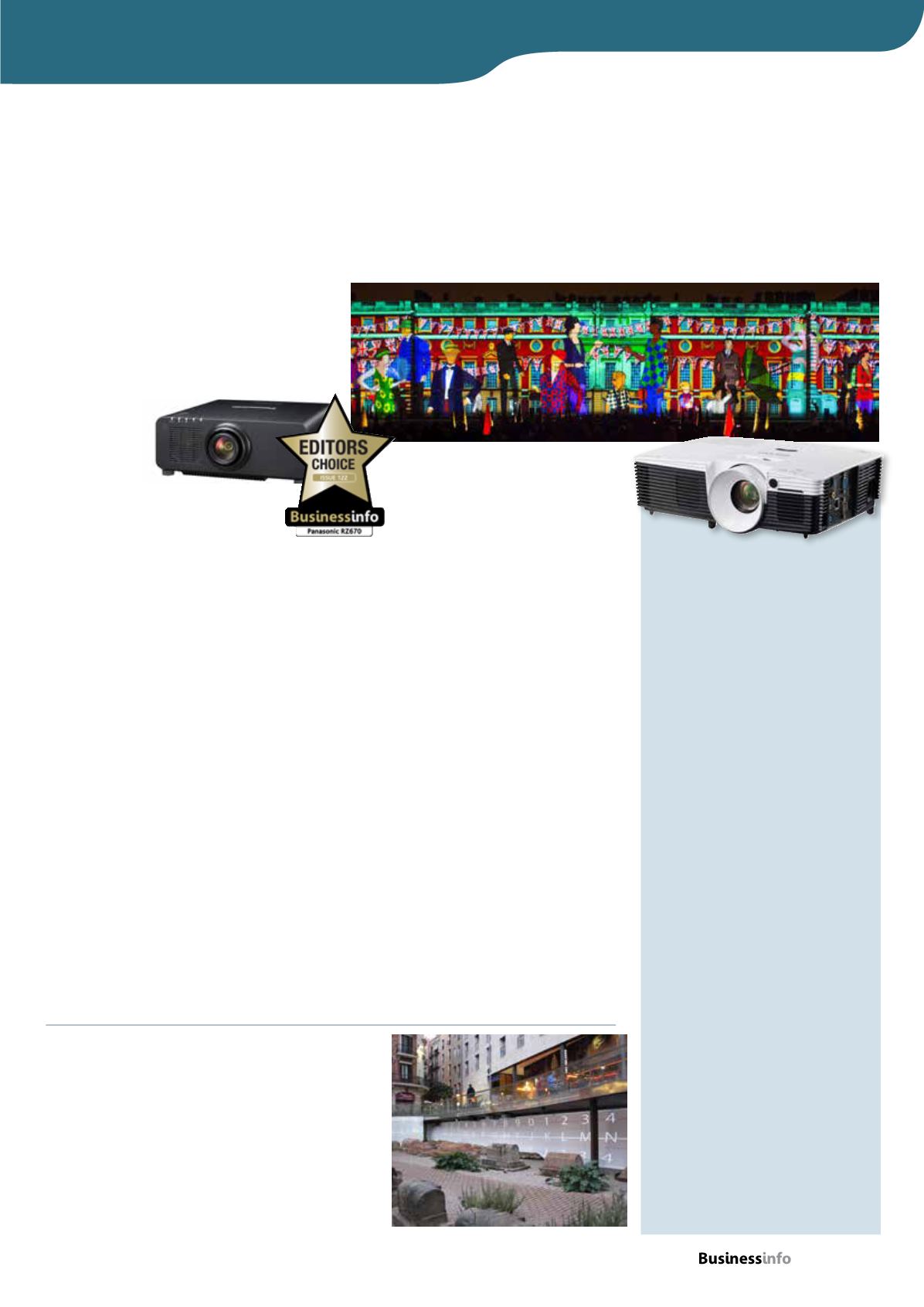
ROI team
evaluated the
performance of
the Panasonic
6,500 lumens
RZ670 laser projector against a range of
popular lamp-lit projectors in three key
verticals – museums and galleries, higher
education and rental and staging.
ROI team found that the Total Cost of
Ownership (TCO) of Panasonic’s laser projector was
11% lower in museums and higher education and
54% lower in rental and staging, where the move to
laser could transform working practices.
Because the likelihood of laser projector failure
is very low, ROI team says that pre-hire checks can
be compressed and carried out at the next hire
location, triggering big savings in transport and
storage. It calculates that point-to-point hiring
would save 86 redundant days per projector per
year, representing a 33% increase in productivity.
In addition, ROI team suggests that only one
back-up projector is needed to cover ten projectors
in the front line.With AV professionals telling
researchers that one projector in every five is on
location to provide ‘hot back-up’, this creates a
potential saving of 5%-10% of hire costs.
In addition to its cost and productivity benefits,
the RZ670 laser projector had 26% lower carbon
emissions and 22% greater light output.
Hartmut Kulessa, marketing manager of
Projector Products at Panasonic Visual System
Solutions, said: “This is an important piece of
research that should provide confidence to end
users that the switch to digital will not only be cost
effective, but brighter and more energy efficient.”
business.panasonic.co.uk/visual-system
Laser projectors have lower
TCO than lamp-based models
Laser projection is now more cost
effective than traditional lamp-
based technology, claims Panasonic
following the publication of a new
study by ROI team.
Projectors
magazine
01732 759725
23
In the spotlight
The Ricoh PJ HD5450
The Ricoh PJ HD5450 projector series
is a bright 4000/3500 lumens high
definition projector for mid-sized
conference rooms and class rooms.
It is capable of displaying the finest
detail in image sizes up to 300 inches
(diagonal) and, with a high contrast
ratio of 10,000:1, is equally suitable for
action-packed video.With a built-in
10W speaker, you don’t even need to
connect external speakers.
The projector has extensive
connectivity enabling it to connect
with almost any camera, DVD player or
media device. Optional 3D glasses can
be used to view 3D models, blueprints
and videos.
For ease of use, the projectors have
quick on and off functionality. This
lets you display an image within five
seconds of turning on the projector and
shut it down instantly without having
to worry about residual noise.
There are three models in the
range, the PJ X5460 (XGA), PJ WX5460
(WXGA) and PJ HD5460 (full HD 1920
x 1080p dpi).
All models have an EcoMode that
lets you adjust power consumption,
if need be on a slide-by-slide basis. As
well as reducing electricity consumption
EcoMode can extend lamp life from
3,000 to 4,000 hours.
Other features include wall colour
and keystone correction and network
connectivity for monitoring lamplife
and remote on/off.
Panasonic puts on a royal
display
Panasonic has announced a long-term
corporate partnership with Historic Royal
Palaces (HRP), the independent charity which
manages six former Royal residences in the UK.
Following the agreement, 12 Panasonic high
brightness projectors were used as part of the
500th anniversary celebrations at Hampton Court
Palace. A 22-minute projected artwork, which told
the architectural and cultural history of the palace,
played for three nights over the Easter weekend.
In addition, Panasonic laser projectors are being
used in a new exhibition inside Hampton Court
and within the Tower of London jewel house.
Masaki Arizono, managing director of Panasonic
System Communications Company Europe, said:
“This partnership marks the start of a long-term
relationship with Historic Royal Palaces, which we
feel generates tremendous value for both parties.
It is part of a wider Panasonic strategy to provide
dedicated solutions support for our key customers.”
Rupert Gavin, chairman of HRP, said: “We are
continually seeking new methods to engage with
our visitors, incorporating new technology to bring
history to life in creative and inspiring ways.We
are delighted to have formed this partnership with
Panasonic. It will further allow us to tell these
stories using their superb range of projection and
display products.”
/
Veni, vidi, vivitek
Roman Barcelona has been brought back to life in a light
art installation designed by Slidemedia Laboratory, a
multi-discipinary group of artists who use AV technology
as their creative medium.
Ignis Fatuus commemorates the Roman history of the
city in an exciting multimedia light show using historical
Roman remains as a structural backdrop. Eight Vivitek
projectors were installed around the perimeter of the outside
exhibition space, with MediaFlow software used to produce
contrasting, monochromatic, blended images that evoke the
sculptural forms of the historical artefacts.
Twelve Panasonic projectors helped light
up the 500th anniversary celebrations at
Hampton Court


